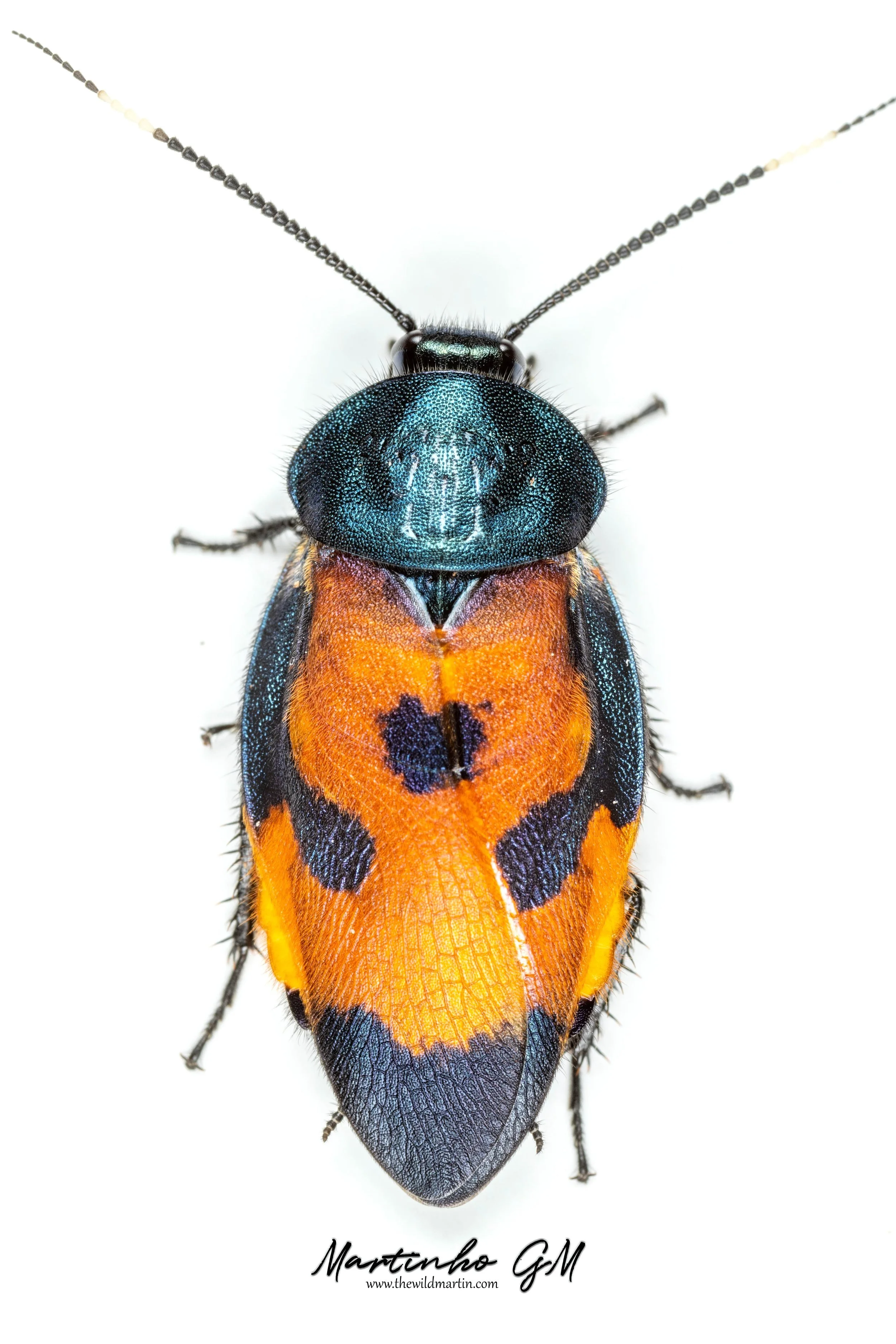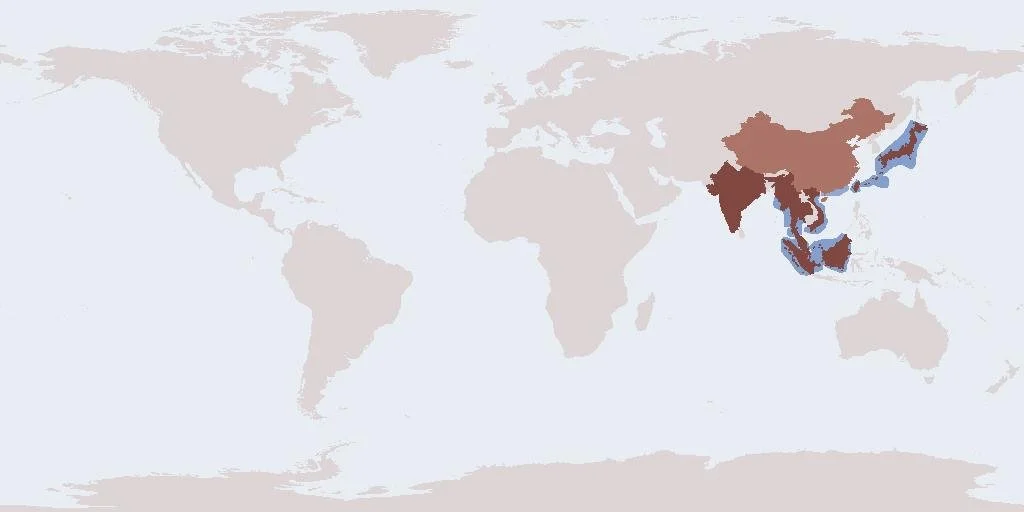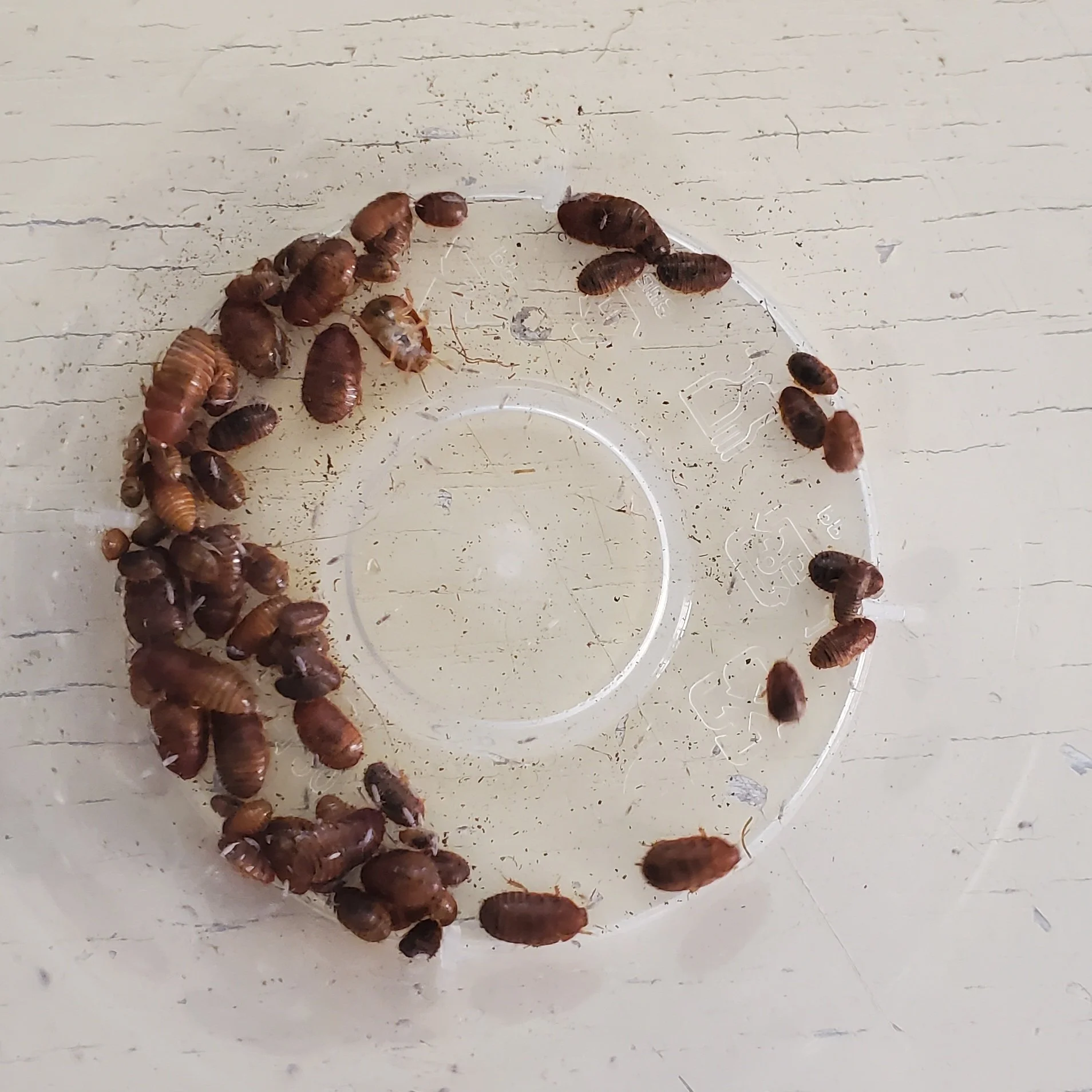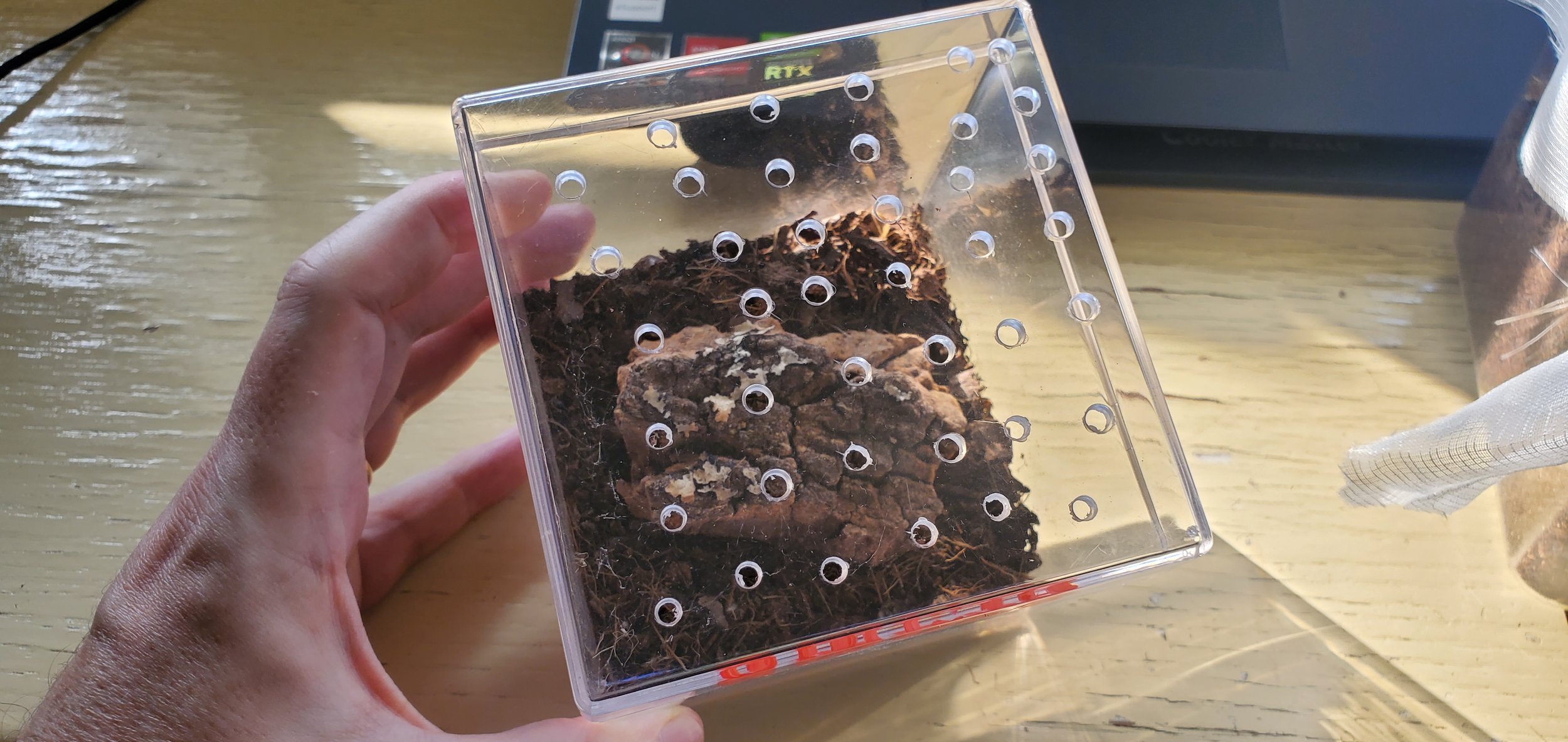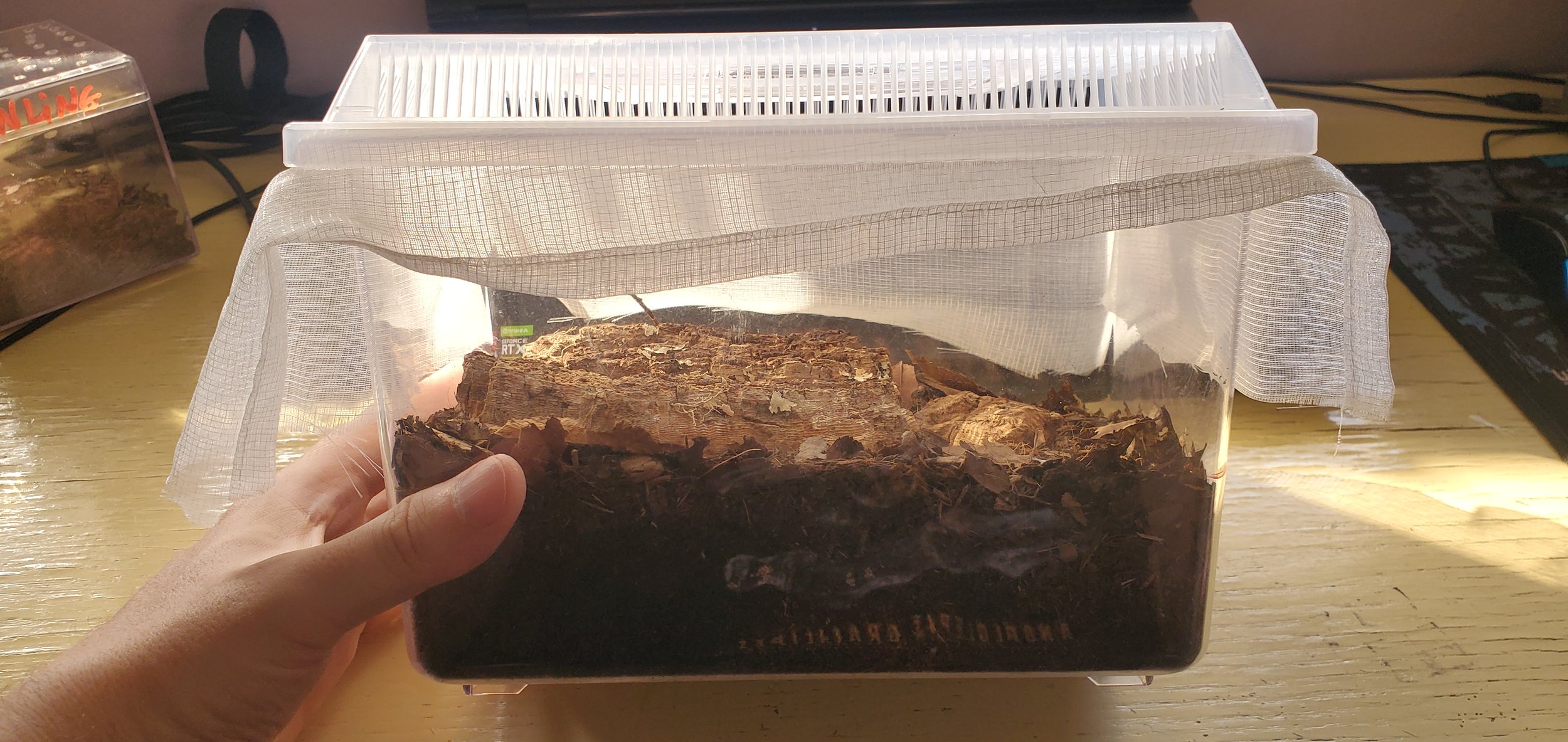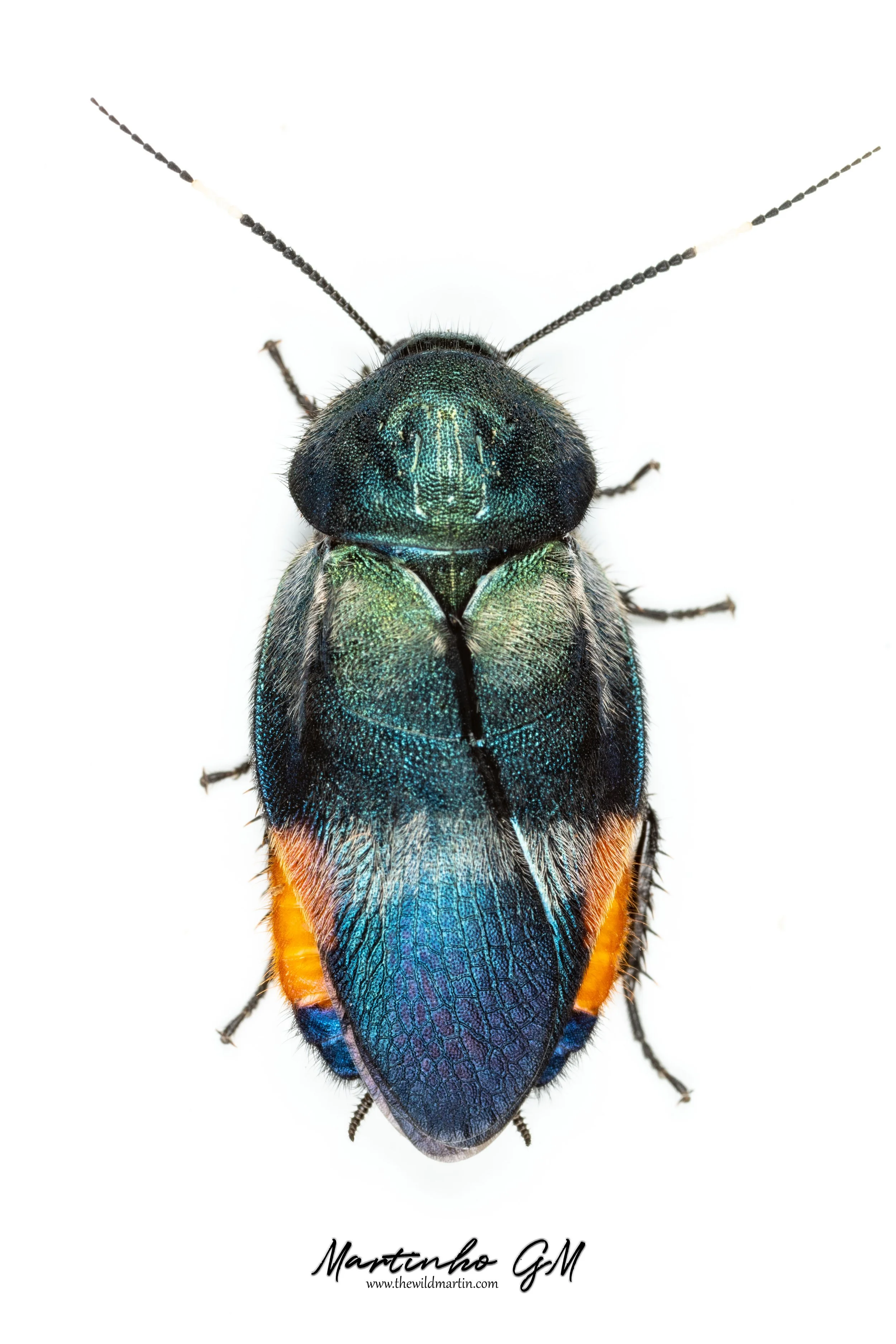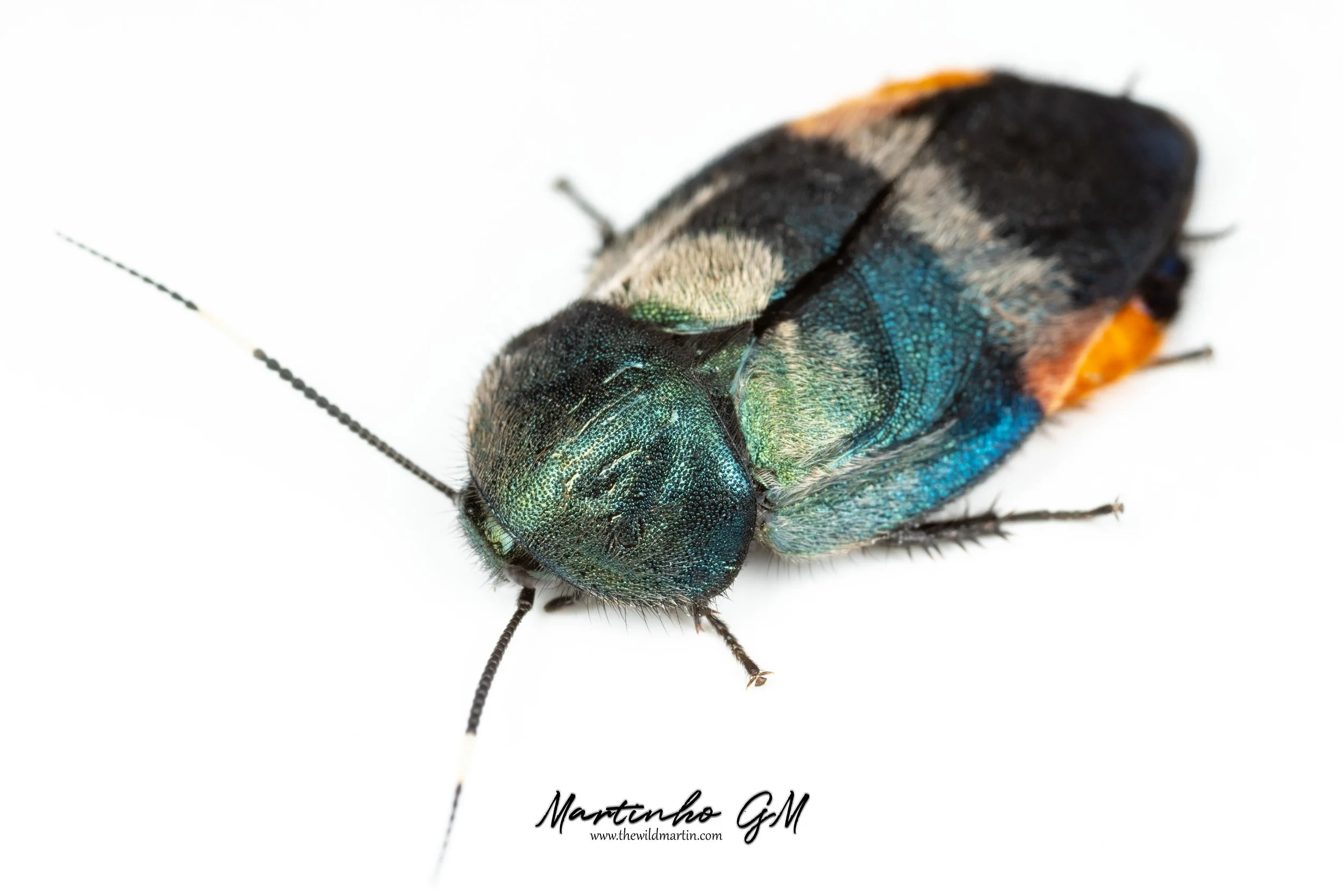Eucorydia, Ecology and Care Guide
INTRODUCTION / SUBFAMILY / GENUS
Eucorydia is one of the most remarkable genera in Blattodea for its attractive appearance. Most species of this genus are characterized by a shining metallic coloration and a combination of bright green, blue and orange markings.
Eucorydia westwoodi male
Eucorydia species are difficult to collect and rarely seen in collections, thus making them very desirable and valuable roach hobbyist collection additions.
All Eucorydia species can only be found in Asia.
Eucorydia genus belongs to the Corydiidae Family. Corydiidae, previously known as Polyphagidae, where most of the genuses belonging to this Family, are known as sand cockroaches. I prefer to call them the Ugly Ducklings Family since the nymphs have nothing to do with the beauty of the adult forms.
Eucorydia sp. nymph
Type species. Eucorydia westwoodi (Gerstaecker, 1861)
COMMON NAME
Eucorydia are commonly known as Flower Roaches, as the males are known to be near flowers during the day.
DISTRIBUTION
Eucorydia worldwide distribution - Cockroach Species File
The whole genus is exclusively found only in Asia.
ECOLOGY
Males are usually found visiting flowers during the day, while females can be found hiding under the bark of rotten wood.
Eucorydia linglong male
Sometimes the individuals can be found on the ground, or observed flying on the mountain top.
LIFE CYCLE
In Eucorydia, the number of larval instars is 9 or 10 in females and 8 or 9 in males.
In a recent study, nymphs kept at room temperature (18 − 24°C), in which, the duration of the larval period (i.e., from hatching of the ootheca to the emergence of adults) was between 591 – 679 days in females, and 562 – 645 days in males.
Eucorydia sp nymphs
I find these periods to be extremely long compared to those from my own experience.
In my bug room, temperatures drop to 18C during winter (December, January and February), and remain between 22C to 28C for the rest of the year, with the exception of summer (July and August) where it peaks up to 32C.
In a period of 6 months, I was able to rear successfully, new born nymphs up to pre-adults for two species (QingLing and Yasumatsui), while the other 3 species (LingLong, Guilinensis and Westwoodi) have remained between 5th, 6th or 7th instar.
Eucorydia guilinensis
Regarding their adult stage life cycle, it can be pretty short. I have experienced males which have only lived 1 month (for example E. guilinensis) and others which managed to be kept alive and kicking for 2 and 3 months (E. westwoodi and E. lingong), almost matching the same life expectancy of the females of 3 to 4 months.
REPRODUCTION/BREEDING
It is well known that most cockroaches show elaborate mating behavior, which is composed of:
(1) male raising his wings (if present) in front of the female;
(2) female stepping slightly onto the back of the male and feeding on the tergal-gland secretion produced by the male,
(3) the male moving posterior and clasping the female’s caudal end with his phallomeres; and
(4) finally the pair taking a tail-to-tail position.
In Eucorydia yasumatsui it is found that it lacks elaborate pre-copulation behaviors, in contrast to most cockroaches.
On encountering a female, the male rushes to her, and then chases her, frequently touching her with his antennae. After chasing her for a short time, the female stops walking, and the male turns 180° behind her, taking an opposite-linear position to the female, and they initiate “tail-to-tail” copulation, which lasts for a few hours
The mating behavior of Eucorydia yasumatsui revealed herein may well resemble that in panchlorine and oxyhaloine blaberids and in T. petiveriana in that the female is always passive, without any positive actions towards her counterpart.
A few days after copulation, the females of Eucorydia will start to produce their oothecae
Each ootheca may contain between 5 – 10 eggs. We may say that in most Corydiidae (polyphagids) the number of eggs per ootheca is fairly low.
ENCLOSURE
The nymphs cannot climb glass or plastic, but the adults are very agile and will climb any surface very easily.
I have been keeping my Eucorydia in two types of enclosures.
The first enclosure is Dimensions LxWxH. 8x8x8 cm and serves to house the first colony of each new species I am keeping. Normally, i can only buy few nymphs, either because of their rarity, either because of their insane prices. As such, a starter colony up to 10 or 12 nymphs will get housed in this smaller enclosure.
This happens for one particular reason only, to facilitate my job while trying to count the nymphs and find the oothecas.
In this type of enclosure, I will have 1 inch (2.54 cm) of substrate and a piece of cork bark. I will mark one of the corners as the hydration corner.
Once my starter colony breeds and dies out, I will then transfer all the oothecas into a kritter keeper enclosure small size, dimensions LxWxH 15.75 x 9.38 x 12.5 cm. In this type of enclosure, I will have around 2 inches (5 cm) for substrate with the top filled with dry dead leaves.
FORAGING AND FEEDING
First of all, please remember to add tons of dried dead leaves to the top of your substrate. The nymphs will munch on these regularly and they will serve as a great back food resource in case you end up neglecting your colony temporarily.
Eucorydia linglong male
I feed all my colonies basically the same and once or twice per week, depending on their size and numbers.
I always give them sweet fruits slices apples, bananas, oranges, mangos, etc, dropped directly into the substrate and not into dishes as the nymphs are extremely small and cannot climb plastic or glass.
As for the protein, I feed them small turtle food pellets.
Each of the food types is placed separately into one specific corner, and on the opposite side (dry side) of the hydration corner. This prevents the food from developing mold from any contact with any humidity.
TEMPERATURE
As I mentioned before, in my bug room, temperatures drop to 18C during winter (December, January and February), and remain between 22C to 28C for the rest of the year, with the exception of summer (July and August) where it peaks up to 32C. I do not offer any additional heat during winter, and let the nymphs go through a short diapause. I will also reduce the amount of humidity present inside the enclosure as it mimics the overall Chinese climate. Dry winters and wet summers.
AIR, SOIL HUMIDITY and VENTILATION
With the exception of the winter period (3 months), where the air humidity will stay between 40 and 60%, the rest of the year, the air humidity will vary between 80 to 95%.
Eucorydia linglong female with ootheca
As for the soil humidity, as taking as reference the small kritter keeper, I always moist the same side/corner, and just enough to ensure there is a humidity gradient created horizontally as well as vertically. This has been proven to be critical for the safe development of the nymphs. They do seem to like some humidity but not too much as I have never found them on the bottom layers (more humid) of their enclosures. I would say that the last 20% of the enclosure depth is depleted of any nymph presence.
Humidity is more critical in the early stages of nymph development.
Finally, another critical aspect of their husbandry, which I have experienced its negative effects first hand, is ventilation. It is fundamental that their enclosure be fully and well ventilated. I have managed to wipe out an entire colony of 30 E. yasumatsui nymphs in a period of 5 months because the enclosure in which I was keeping them was extremely poorly ventilated.
Eucorydia westwoodi
Overall, Eucorydia will do better in a dry and well ventilated enclosure and a wet and humid one.
CONCLUSION
This is a truly fascinating genus to have in your collection. Once you manage to grasp their husbandry, they are not demanding at all. Once a week, you feed them, and once every 3 or 4 weeks, you hydrate their enclosure (for my local conditions). And you just need to be patient and you will be rewarded with the most stunning colorful bright roaches your eyes have ever looked upon. Small and short lived, but definitely a must have!
To wrap up the article, the smallest starter colony I have ever gotten was Eucorydia westwoodi with 1 male and 3 females as nymphs and I have to say, I do not recommend and I know I was extremely lucky to have been able to breed them successfully, as I ran a huge risk of having the male die out before the females matured. Luckily that didn’t happen, but it is very frequent with other keepers. So I would recommend a colony of 8 to 12 nymphs of mixed sizes if you can find them.
Eucorydia linglong male
